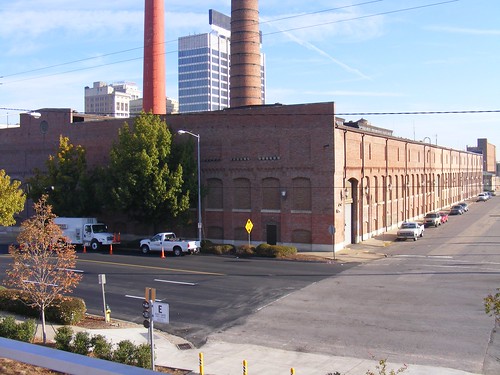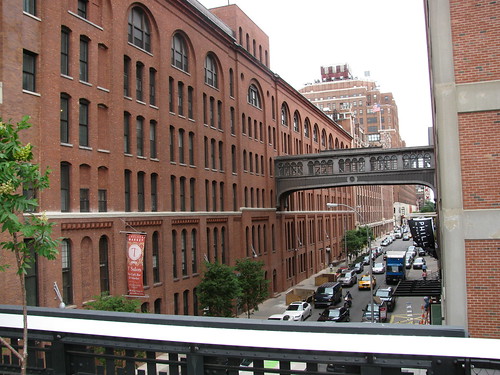Stationmaster’s note: The following excerpts are from Design Review Committee columns originally published on the Magic City Post in 2012. We’ve re-posted them here to provide context for Rebecca’s July 25 Design Review Committee recap as it pertains to Harbert Realty and the sign atop Two North Twentieth. Clicking on the dates will take you to the original piece.
Design Review Committee Meeting: September 26
“The Harbert Realty representative was to speak on the status of the rooftop sign on Two North 20th. The committee was given a “heads up” on the project by a current tenant (and committee member). Apparently, the sign is in need of expensive repairs. Until the time comes to decide on the status of the sign, Harbert would like to wrap it in vinyl. The committee will make decisions and recommendations on this project once it is presented by Harbert.”
Design Review Committee Meeting: October 10
“Keith Rouss of Harbert Realty brought the company’s intentions for the existing sign at the top of Two North Twentieth to the committee. Due to the existing economic climate, it is no longer cost effective or affordable to continue maintenance on the 40-year-old sign. Harbert intends to wrap the sign in a pre-printed vinyl that would contain advertising. The committee expressed concerns that the sign would become “the world’s largest billboard” and no longer blend with the city’s skyline. The plans presented to the committee included a national advertising campaign for Pepsi, proposed by a New York advertising firm and local bottler Buffalo Rock. In addition to the billboard concerns, the committee took issue with the nature and look of the signage. Acknowledging the interim nature of this plan (the advertising contract would be for 18 months), the committee requested Harbert find another way to meet both the advertising and the design concerns. Despite Harbert’s concerns that the advertising plan would fall through, the committee tabled the discussion to the next meeting.”
Design Review Committee Meeting: October 24
“Keith Rouss of Harbert Realty returned to the committee with what he hoped would be a clearer iteration of the company’s intentions for the existing sign at the top of Two North Twentieth. With Rouss was Jimmy Lee from Buffalo Rock Company, the potential advertiser for the wrap of the electronic sign atop the building. The committee discussion revolved around the plans to wrap the sign being contradictory to current design standards. Rouss again argued that the uniqueness of the sign would preclude setting any precedents, but the committee still voted to deny the request.
The committee acknowledged the corporate citizenship of both Harbert Realty and Buffalo Rock Company, but despite its status as a “legal, non-conforming sign” the wrap still constitutes a billboard rather than something more akin to an artwork. In an interesting twist, a potential protestor to the wrapped sign idea attended the meeting. His concern was that this would open the opportunity to put billboard-style signs on every building in the city’s skyline, thus ruining it. Since the committee denied the request, the protestor had no need to provide comment.”
Design Review Committee Meeting: November 14
“Tab Bisignani of Harbert Realty returned to the committee with yet another iteration of the company’s intentions for the existing sign at the top of Two North Twentieth. The new proposal was of a blue sky with the word “Pepsi” formed by clouds and the Pepsi logo. Once again the committee denied the request with the explanation that the wrap still constitutes a billboard rather than something more akin to a work of art. It is interesting that most people who attended the committee meetings for each of the Harbert presentations seem to understand that the committee is asking for art and an acknowledgement of the history of Buffalo Rock and the city. Yet Harbert continues to present advertising (and continues to get denied). A simple solution thrown around after one of the meetings included running an art contest that includes a sponsorship logo – two birds with one stone, so to speak. The most uncomfortable thing about this recent presentation was the attitude of the Harbert representative. While his, and Harbert’s, frustration is understandable, Harbert has the opportunity to communicate more with the city and the committee to make this something meaningful to everyone – since it is everyone in the region who will see it at one time or another. However, whether or not he meant it this way, Bisignani’s implied threats to go to the city or another higher authority over this issue and throwing around the “weight” of the money Harbert provides to the city’s tax base are not displaying a positive image of Harbert’s corporate citizenship. At this meeting, Bisignani acted more like a corporate bully.”





 Yes, there’s recently been a significant amount of focus on proposed plans for I-20/59. Diehards have been aware of the topic since
Yes, there’s recently been a significant amount of focus on proposed plans for I-20/59. Diehards have been aware of the topic since 




More things to think about regardless of the I-20/59 conclusion
Now, I drive by the BJCC and Uptown every day. As a result, I’ve had several other questions on my mind in recent weeks as it relates to I-20/59 and ALDOT’s proposed changes. I’m sure someone’s going to get to these at some point, but I wanted to go ahead and get these thoughts out there too just to see what bubbles up from readers:
Where do the cars currently parking under the interstate go? A lot of cars will be looking for new places to park as a result of the currently proposed configuration and the closing of 9th Ave. N. A survey of spaces located between 18th and 23rd Sts. N. underneath the interstate and along 9th suggests at least 625 (and as many as 660) vehicles will need to figure out where to go (special thanks to the RPCGB for helping to gather this info so quickly) once this project begins to move forward. This, provided new development continues to occur adjacent to the BJCC begs a follow-up question:
Where do we build a new parking lot (or do we even need to build a new one)? Before we jump on the “we need to build a new deck” bandwagon, it may help to pause and look at the bigger picture. This may be the spark needed to implement an expanded shuttle service downtown. It may even encourage folks to use the existing service provided by the BJCTA. The idea of enabling commuters and visitors to park in one of the lots located along Morris Avenue or any of the existing parking decks maintained by the Birmingham Parking Authority is intriguing. On-street parking options are plentiful, but not sufficient for those visiting the museum or the BJCC and unable to check their meters continuously throughout the day. A shuttle only works is if you can get folks out of their current need of having to park as close to their location as possible. It’s something possible to accomplish if you made it a more logical (read – cheaper) option to park in the decks than on the streets (the way many cities approach managing their parking situations to free up on-street spaces for shorter visits to stores).
Is it time for directional signage citywide? We seem to like tackling the creation of gateways for the city; the recent tree planting at the 31st St. N. exit suggests the corporate community is willing to help the city put its best foot forward as we see increased visitors not just this year, but arguably over the next five as we continue to commemorate milestones in the civil rights movement. Wayfinding, however, has been an issue the powers that be have been discussing for a long time. The Medical District is the most recent section of Birmingham to attempt to tackle it. Individual sites and attractions have tried as well as they tire of waiting for a comprehensive solution to surface.
If we accept that the ramps will go away regardless of what happens, we can also admit it will provide an excuse for visitors and locals alike to explore not just greater downtown, but the entire city (if only because it’s now a possible “accident” waiting to happen). It’s a chance to make sure all are aware of the options and experiences available to them. It could also make it easier for folks to navigate an already insane grid system.
Speaking of the grid…
Is it time to wave “bye-bye!” to the one-way streets downtown? One of the reasons often given for the existence of one-way streets in Birmingham’s city center is because of the ability to get into and out of downtown as quickly as possible via the surrounding highways. The elimination of the ramps providing access to these thoroughfares could be the impetus to finally carry out a major recommendation of the 2004 City Center Master Plan – converting many one-way streets back to two-way. It’d probably be most helpful along those streets most affected by the proposed interstate changes – thoroughfares like 5th Ave. N., 18th St., 22nd St. and Richard Arrington, Jr. Blvd. As many hope to see more restaurants and stores move downtown to serve the estimated 80,000+ that venture in every day, it sure would be nice to make them more visible from multiple directions. It could even encourage more foot traffic – thanks to increased “eyes on the road” for peace of mind.
These are questions not necessarily considered when looking at the situation on its surface, but they will be ones where answers are more critical to the period of during and after construction of whatever happens. Ironically, the very thing the proposal aims to get to pass through the city quickly – the car – is the one thing that will lead to significant decisions to be made about how downtown will continue to adapt and change as it enjoys a national and international close-up.
7 Comments
Posted in Commentary, development
Tagged ALDOT, Birmingham, I-20/59, parking